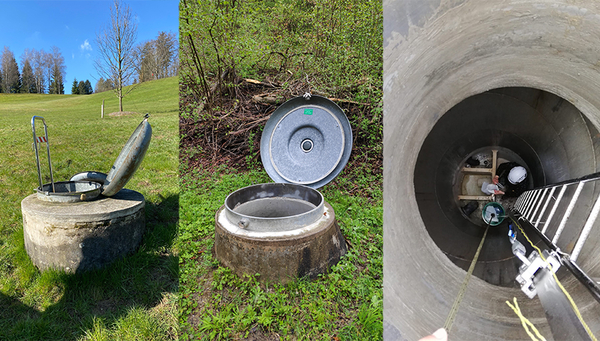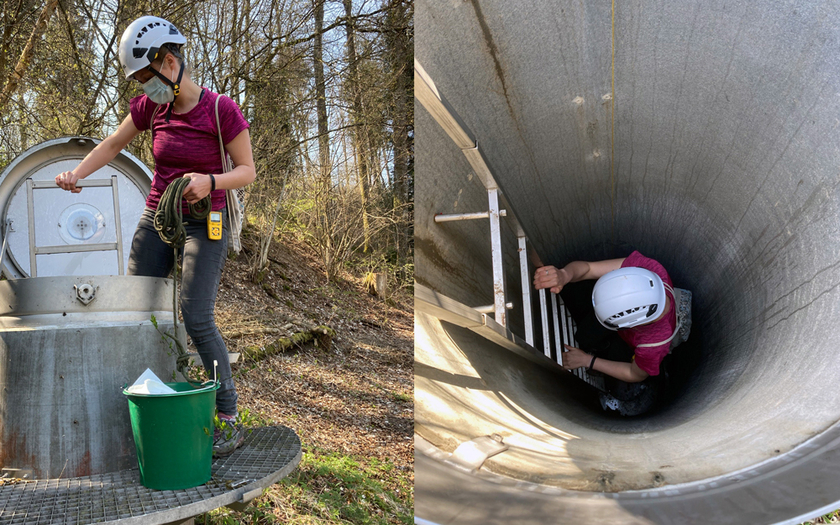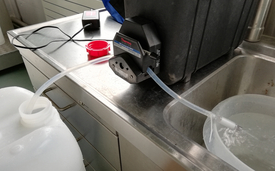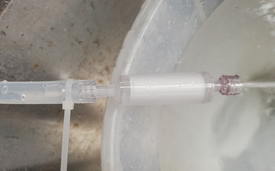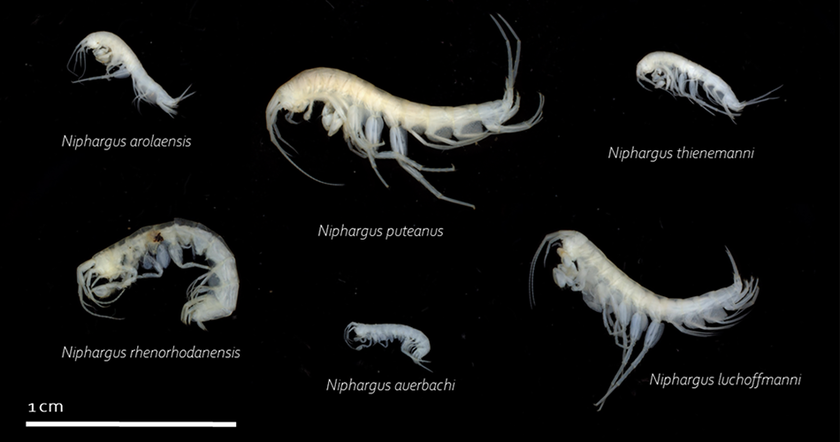News Detail
DNA traces in groundwater
May 3, 2023 |
Groundwater is an invisible – and therefore often disregarded – treasure that is threatened worldwide due to overuse and pollution. In Switzerland, 80 per cent of drinking water comes from underground water reserves. It is thus in our interest and also enshrined in the Water Protection Act that these reserves are of impeccable quality. Currently, groundwater quality is measured primarily by physical and chemical parameters (such as water temperature or the concentration of substances dissolved in the water), although it is known that groundwater organisms play an important role in purifying groundwater.
Uncharted territory
"With biological assessment of groundwater, we are entering completely new territory," says Florian Altermatt, research group leader at the Eawag Water Research Institute and Professor of Aquatic Ecology at the University of Zurich. With his team, he has investigated highly diluted traces of genetic material in groundwater using so-called environmental DNA analyses (see box). The first results have just been published in the scientific journal Molecular Ecology.
The results show that a large variety of living organisms leave their DNA traces in groundwater. "The fact that a wide range of organisms live in groundwater is a good sign," says Altermatt. Because these subterranean biotic communities degrade pollutants – and thus clean the groundwater. The researchers state that "our study highlights the relevancy of considering biological parameters, alongside chemical and physical parameters, when evaluating the state of groundwater". They conclude: "We strongly believe that environmental DNA analyses should be included in monitoring programs to investigate the impact of land-use or climate change on the aquifers."
Sampling of groundwater organisms: The access points were drinking water wells, where an environmental DNA sample was taken from the water. (Photos: Eawag, Florian Altermatt)
Only a small piece of the puzzle
However, most of this diversity remains largely unknown. "We found almost 5,000 different genetic variants but were only able to assign about three percent of the sequences to specific organisms," says Marjorie Couton, postdoctoral researcher in Altermatt's research group and lead author of the new study.
The researchers have now identified 62 different species based on these genetic sequences. These include not only various species of amphipods, which spend their entire lives in the underground waterways, but also soil organisms such as earthworms or above-ground creatures such as spiders. "We suspect that their genetic traces are washed down into the groundwater with the rain," explains Couton.
The groundwater sample was filtered to extract the DNA in the sample. Therefore, the sampled groundwater is pumped from the canister into a filter unit (right) containing a 0.22 µm pore-sized membrane.
(Photos: Marjorie Couton, Eawag)
Influence of land use
The groundwater samples examined by the researchers come from 20 different wells in the catchment basin of the river Töss in North-Eastern Switzerland. These wells are located either in forested or in agriculturally used areas. Accordingly, the team around Couton and Altermatt also detected two different signatures in the composition of the genetic sequences. In their research article, the researchers note that: "The sites located in agricultural areas had a consistently different, and generally lower, genetic diversity, than the sites in the forested areas". "However, at the moment we know too little to understand what this reduced diversity means," says Altermatt. "But our data show that the composition of the subterranean biotic communities is apparently correlated with the land use."
Environmental DNA analyses
The last decade has seen a revolution in the biological assessment of aquatic ecosystems: Today, researchers can use molecular biology methods to detect organisms (even rare ones) in streams, rivers or lakes, without collecting the living beings or causing them any harm. In the water samples, the researchers search for traces of genetic material that the organisms leave behind, for example, with their excretions, or genetic traces that are released into the environment when dead cells decay. Now, Altermatt's team has used the same methodology to study groundwater. In doing so, the researchers have taken the sensitivity of environmental DNA analyses to the extreme, since the genetic material in groundwater is even more diluted than in surface waters: A sample of 40 litres contains only a few nanograms of DNA.
Some of the groundwater amphipods found. They are adapted to life in the dark and therefore colourless and without eyes. They are among the largest organisms in groundwater. (Photo: Eawag)
Cover picture: The groundwater samples examined by the researchers come from 20 different wells in the catchment basin of the river Töss in North-Eastern Switzerland. These wells are located either in forested or in agriculturally used areas. (Photo: Eawag, Angela Studer)
Original publication
Couton, M., Hürlemann, S., Studer, A., Alther, R., & Altermatt, F. (2023). Groundwater environmental DNA metabarcoding reveals hidden diversity and reflects land-use and geology. Molecular Ecology, https://doi.org/10.1111/mec.16955
Funding / Cooperations
- Eawag
- University of Zurich
- ETH Zurich, Genetic Diversity Centre (GDC)
- Swiss National Science Foundation
- Federal Office for the Environment FOEN
- Swiss Gas and Water Industry Association (SVGW/SSIGE)

